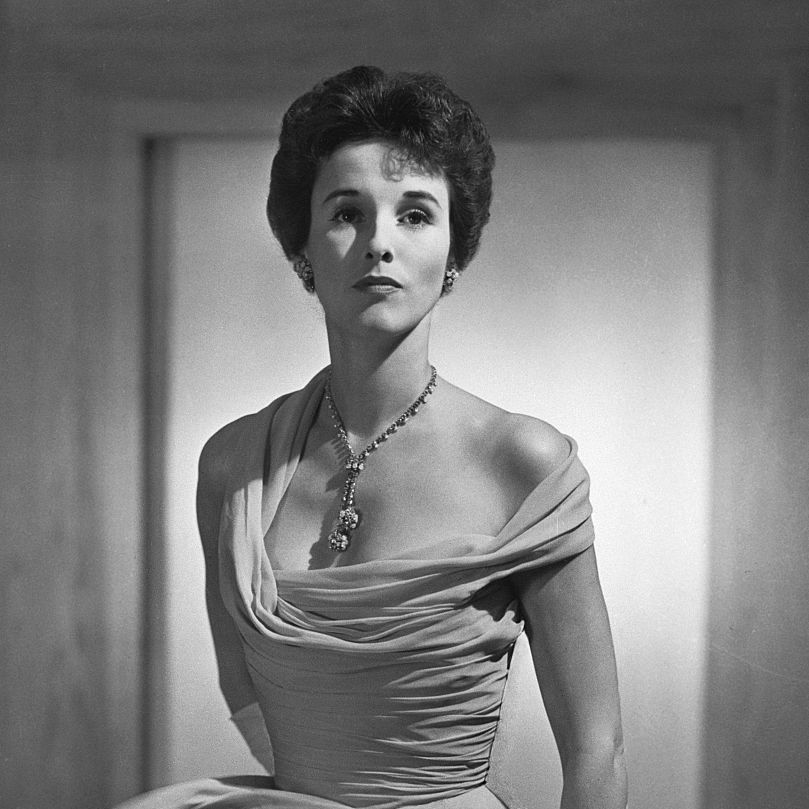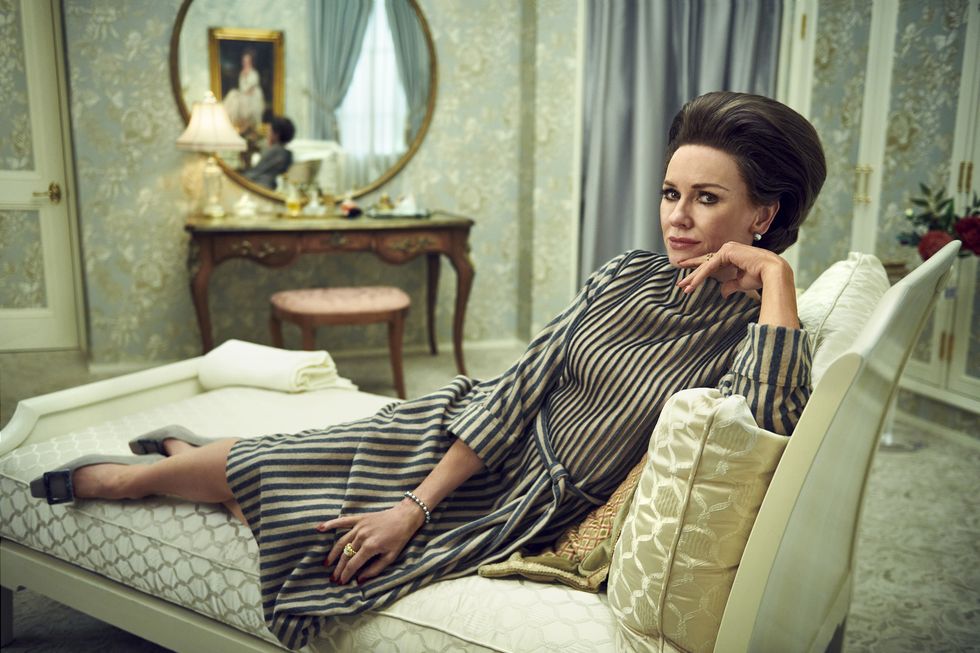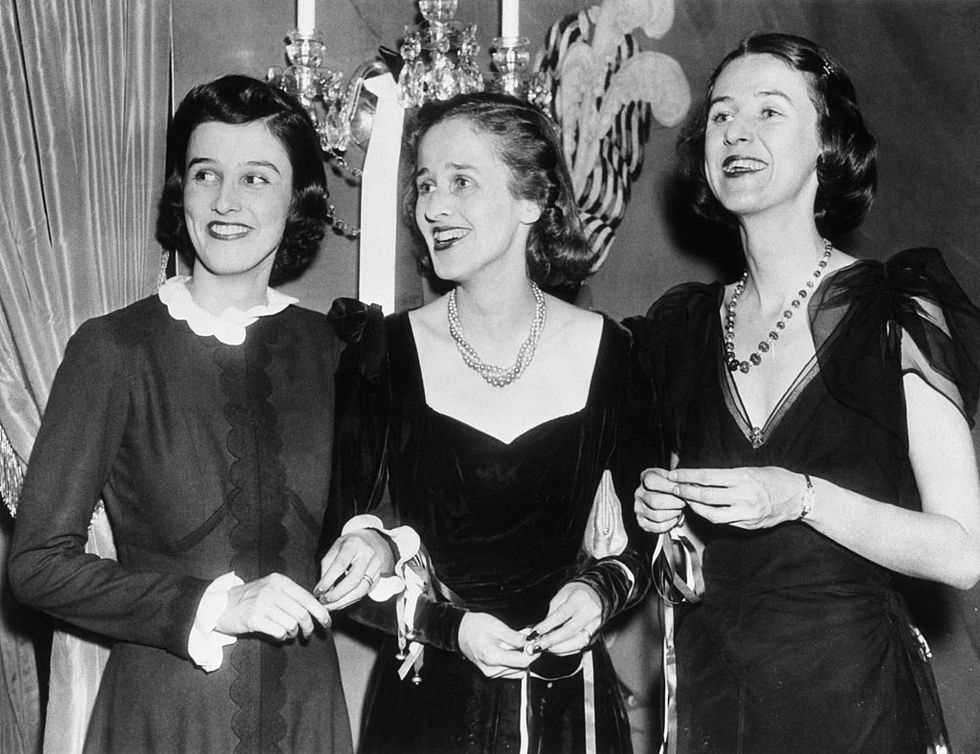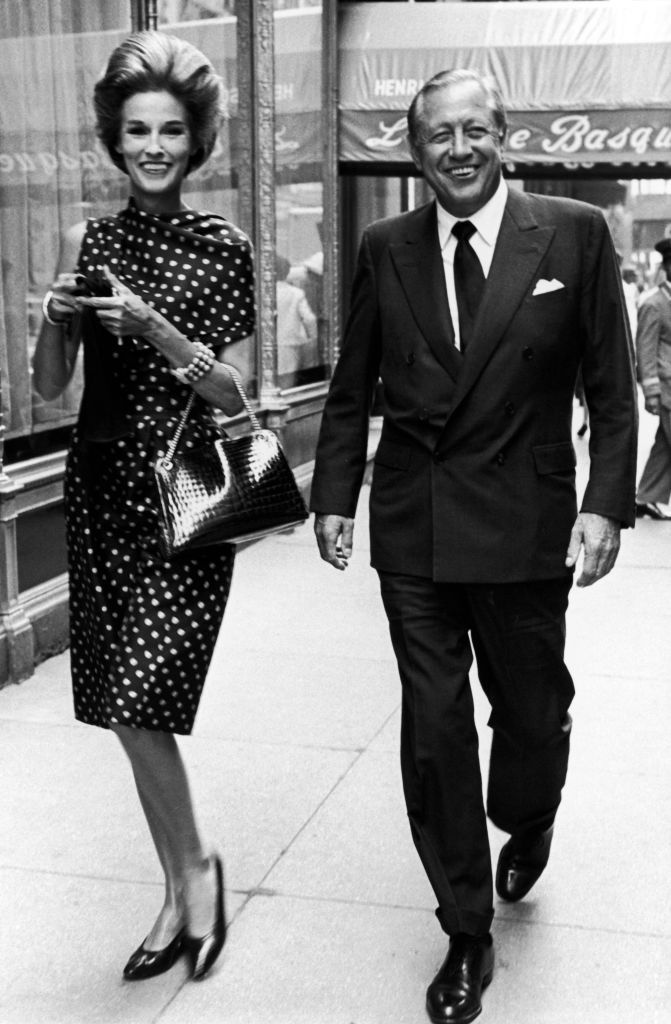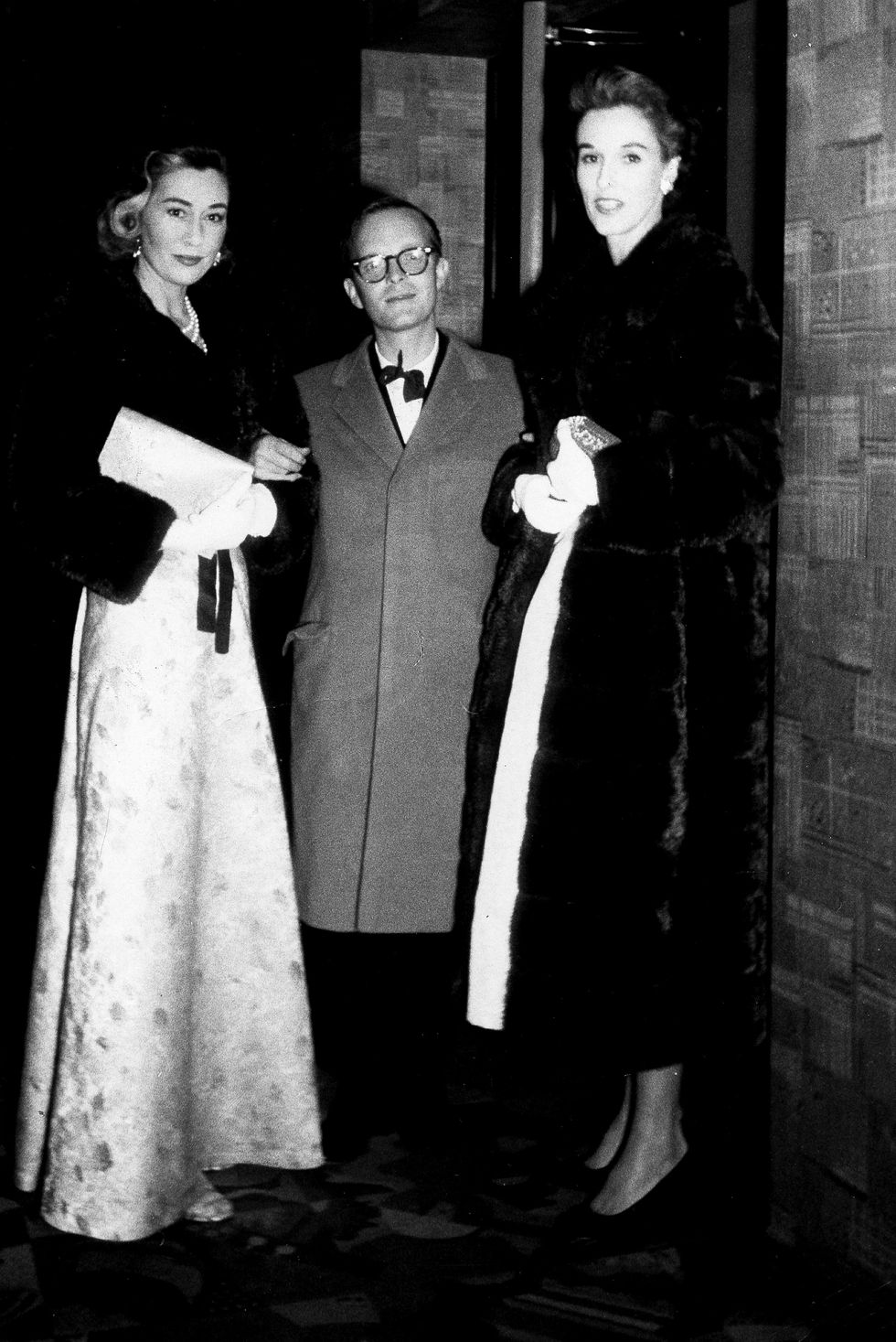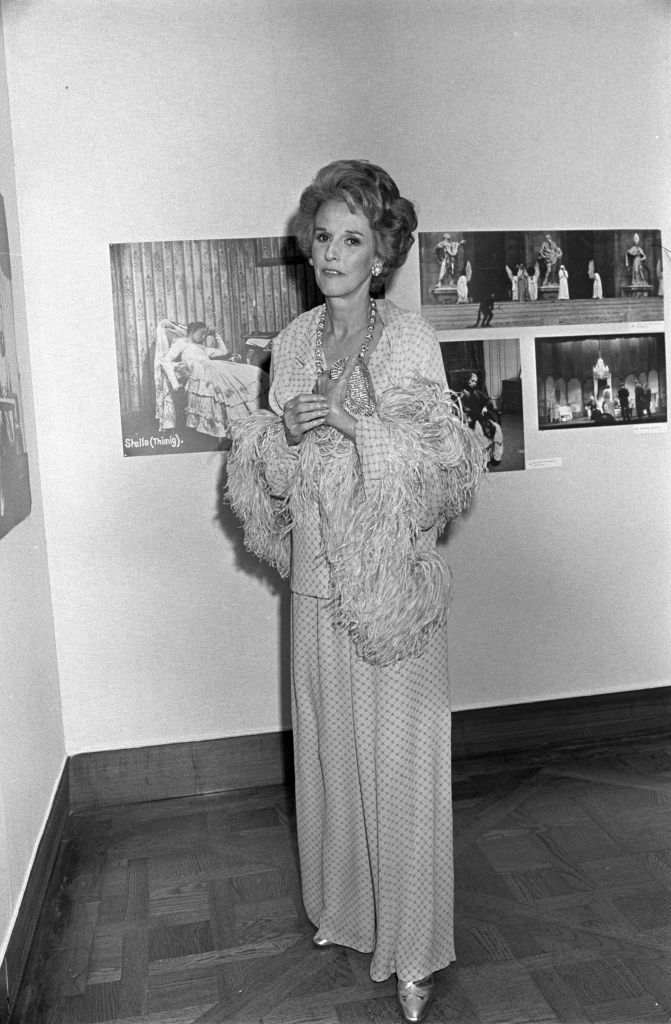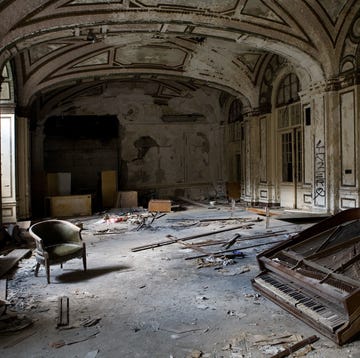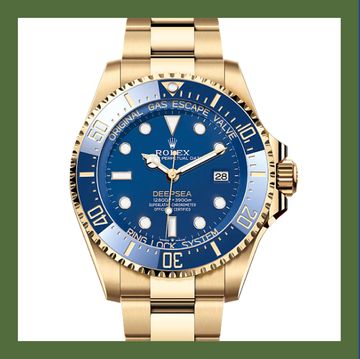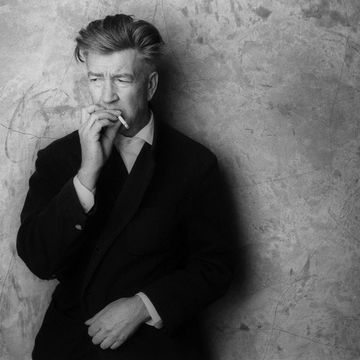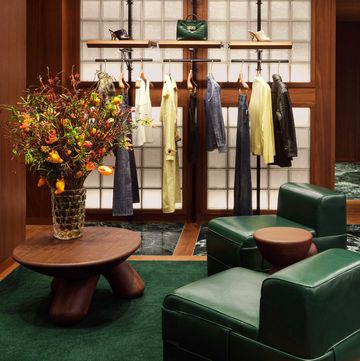“She is the most perfect woman ever made,” Truman Capote (Tom Hollander) tells a friend in the opening scene of Ryan Murphy’s Feud: Capote vs. the Swans, referring to socialite Barbara “Babe” Cushing Mortimer Paley (played by Naomi Watts). “Her only flaw is her perfection; she’s almost too beautiful to look at.”
But behind the glitz and glamour and that untouchable aura, Babe’s life was also one of sadness and heartbreak, the worst of which Truman maligned in his famous tell-all 1975 Esquire article “La Côte Basque, 1965” (you’ll cringe as watch it play out in the series, which debuts this week on FX and Hulu). So what’s fact and what’s fiction? We chatted with Naomi Watts to share everything we know about the grand dame of New York.
Who Was Babe Paley?
Barbara Cushing Mortimer Paley—or Babe, as she was known—was born to a renowned neurosurgeon, Harvey Cushing, in Boston. She and her two older sisters, Minnie and Betsey, were known as the “fabulous Cushing sisters.” These three glamorous Cushing women were famous for marrying into some of the nation’s richest and most powerful families. Minnie married Vincent Astor, who came from one of America’s most prominent families; Betsey married James Roosevelt, the son of President Franklin D. Roosevelt (and later John Hay Whitney). Babe wedded sportsman Stanley G. Mortimer Jr. and later William “Bill” S. Paley, the chief executive of the CBS television network. Together, Babe and William were power players on the New York social scene, throwing elaborate parties for the upper echelon of New York society.
In 1934 at 19 years of age, Babe was in a nearly fatal car accident while driving home from a society party on Long Island with her beau. The force of the impact knocked her front teeth out, and she had to undergo extensive dental surgery on both her mouth and jaw. The surgery was intense, and Babe’s friends commented on how she covered the bruises on the lower half of her face with a chiffon handkerchief when in the presence of others. Yet once she had healed, her false teeth made her smile even more beautiful, many said.
Babe and Bill moved into an apartment at the St. Regis, adorned by decorator Billy Baldwin. The couple spent weekends at their 80-acre estate on Long Island and their New Hampshire lake house. She worked as a fashion editor at Vogue in New York City, where she remained for 10 years and garnered a reputation for being a tastemaker. In fact, her distinctive style earned her a place on the best-dressed list a remarkable 14 times before her induction into the Fashion Hall of Fame in 1958. A photograph of Babe would cause a frenzy among women looking to imitate her effortless style, as demonstrated by a photo of her carrying a handbag with a scarf tied to it—which we still see today.
“There is so much to admire about Babe Paley,” Watts tells ELLE DECOR. “She was a remarkable woman with an exemplary level of discipline. She was graceful and poised and regal. It took hard work to lead her high-society life and strive to create the perfect home for herself and her family.”
What’s more, Watts added, Babe demonstrated a tremendous amount of grit. “She was a deeply loving person who faced a lot of heartbreak in her life,” she explains. “She had to be strong to persevere through sickness and betrayals and disappointments.”
What Do We Know About Babe Paley’s Mannerisms?
“Unfortunately, unlike Truman, there was no real footage of Babe available,” Watts explains, discussing what it took to play the part. “I would have loved to hear her voice or see her moving. Instead, I had to rely on what was written about her to build the character—Laurence Leamer’s great book, [Feud screenwriter] Jon Robin Baitz’s brilliant scripts—to find Babe.” She also turned to dramaturge Stella Baker to assist with research and to dialect coach Elizabeth Himelstein to help her create the right voice for Babe.
As for Babe’s mannerisms, Watts says photographs were the most useful clues. “I would look carefully at photographs of her and study how carefully her hands were placed, how wide her smile was,” she explains. “All of the Swans cared about presentation, about striving for perfection at every turn. I have a big laugh and talk with my hands, but Babe was graceful and delicate, so I needed to retrain my physicality to embody this extremely dignified woman.” Her greatest props to achieving this? “Wearing fake teeth like Babe and carrying a cigarette in most scenes also helped me go outside of myself to embody her.”
Was Babe Paley the Victim of Antisemitism?
Babe was stigmatized for her marriage to a Jewish man, and the two were, on more than one occasion, denied entry to premises in New York for being Jewish. In one account told by Babe’s former au pair, Carol Prisant, in an article from Town and Country, the pair was denied acceptance into an unnamed, highly exclusive country club. “She was livid,” Prisant writes. “It was willing to accept Babe and her children with her first, socially acceptable husband. But it didn’t want Bill Paley and their children. She fumed. She raged. ‘Well, then, none of us will join,’ she snapped, stubbing out her cigarette and yanking the butt from the holder. She stormed away to her room, leaving me thunderstruck.”
What Was Babe Paley’s Relationship with Truman Capote?
Babe was only one of the high-society women in Capote’s inner circle who were referred to as his “Swans”—but was known to be his favorite. “Babe adored him,” Prisant writes. “They were a pair of girlfriends sharing possibly nasty, but very funny, secrets. Everyone else—children, dogs, even Paley—was shut entirely out, as, from morning to night, they whispered and laughed together or, drinks in hand, danced around the living room, giggling like kids.”
The two could be seen together at recurring lunches at the Colony Club, on weekend getaways, and, most memorably, at Capote’s legendary Black and White Ball at New York’s Plaza Hotel in 1966. However, when the Esquire article “La Côte Basque, 1965” hit the newsstands, publicly revealing some of her most private secrets, the friendship turned sour.
What Did Truman Write About Babe Paley?
The Esquire article was intended to be a preview of Capote’s new novel Answered Prayers, featuring characters that were very obviously Babe and her husband, among her other socialite friends. The article told of a woman, Cleo Dillon, whose husband was having an affair with another woman. In a melodramatic storytelling, it depicts a scene alarmingly similar to the real-life scandal that Babe confided to Capote about: period blood–stained sheets that were undeniable proof of an affair. “The sheets [were] bloodied with stains the size of Brazil,” he writes. “He…had to use a bar of Guerlain’s Fleurs des Alpes. To wash the sheets. He soaked them in the tub in scalding water. Scrubbed and scrubbed. Rinsed and scrubadubdubbed.”
The result was nothing short of disaster. Bill’s career and reputation never recovered from the scandal. “People used to talk about Bill as a philanderer, but his affairs weren’t the talk of the town until Truman’s story came out,” writes Babe’s friend John Richardson, in a 2012 Vanity Fair article. Babe decried the article as the ultimate betrayal and refused to speak to Capote again. All of this is covered in the new series of Feud.
Did Babe Paley Really Have Cancer?
By the time the article became public, Babe, a lifelong smoker, was severely ill with lung cancer. Bill paid for every resource he could to fight the disease, but to no avail. “She’d been the ultimate trophy wife, but she’d had the unfaithful husband and she was battling cancer in her early 60s,” said Vanity Fair correspondent Amy Fine Collins, according to The Rake. “There was now a kind of shadow alongside the shininess, prettiness, and flawlessness.”
Babe passed away in her New York apartment in July 1978, a day after her 63rd birthday. Her funeral was the kind of affair that makes Queen Elizabeth II’s storied send-off seem drab by comparison. There were toasts over glasses of Pouilly-Fumé de Ladoucette, elegant floral sprays that few aspirational brides could dream of on their big day, and many, many well-dressed people.
So the jury is still out: Is Babe the most perfect woman of the 20th century, or a very human antihero? We think it’s a little bit of both. As Capote sagely portends in the series, “even the fabulously rich are naked under their clothes."
Rachel Silva, the Assistant Digital Editor at ELLE DECOR, covers design, architecture, trends, and anything to do with haute couture. She has previously written for Time, The Wall Street Journal, and Citywire.
